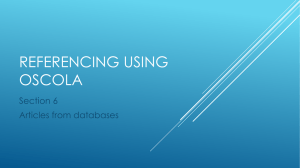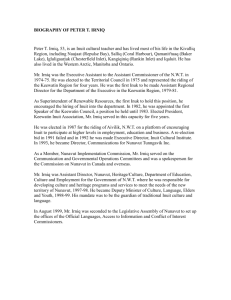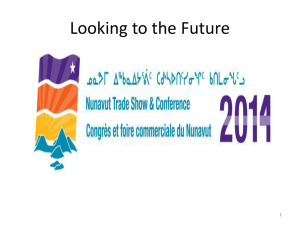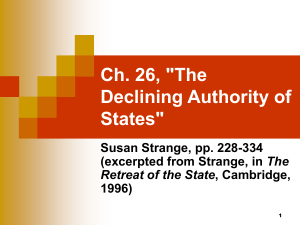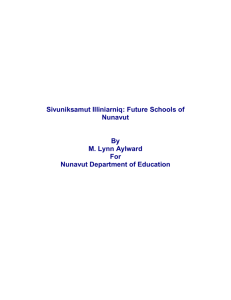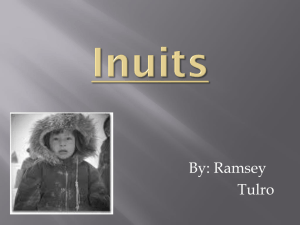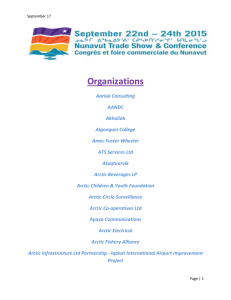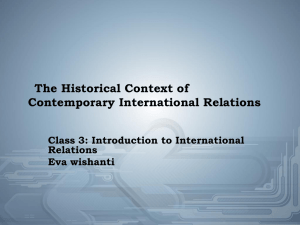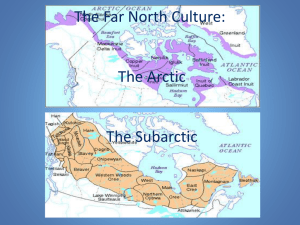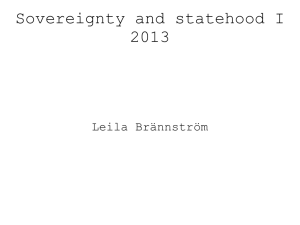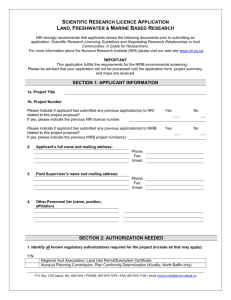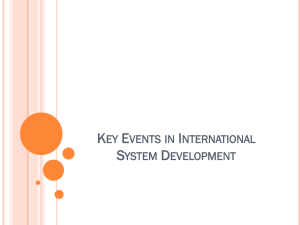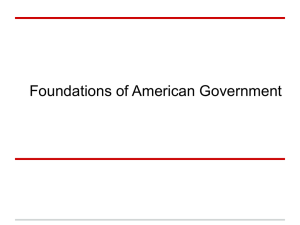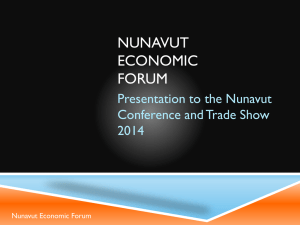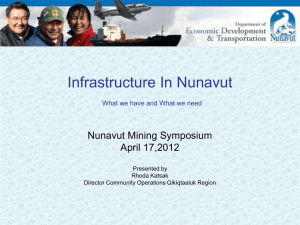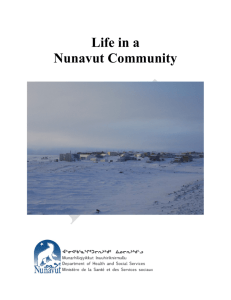- Arctic Portal Library
advertisement
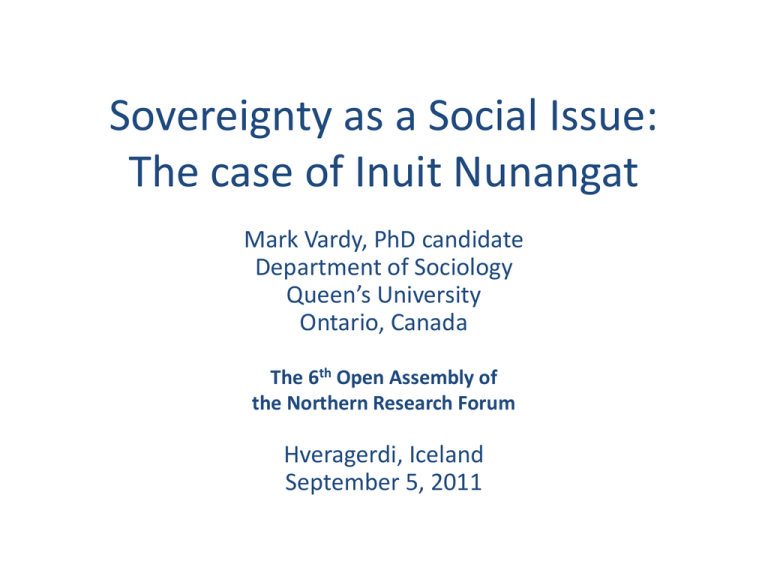
Sovereignty as a Social Issue: The case of Inuit Nunangat Mark Vardy, PhD candidate Department of Sociology Queen’s University Ontario, Canada The 6th Open Assembly of the Northern Research Forum Hveragerdi, Iceland September 5, 2011 Source: Aboriginal Affairs and Northern Development Canada http://www.ainc-inac.gc.ca/ap/in/irs/mpb-eng.asp Communities in Inuit Nunangat, by region, Canada, 2006 Source: Statistics Canada http://www.statcan.gc.ca/pub/85-561-m/2010020/m021-eng.htm Claudio Aporta. (2009). “The Trail as Home: Inuit and Their Pan-Arctic Network of Routes.” Human Ecology. 37:131–146 Questions 1. What are the implications of the inclusion of sea ice as territory in Inuit Nunangat for how sovereignty is understood and practiced? 2. Assuming an understanding of territory that includes sea ice, what, then, are the implications of sea ice reduction (for how sovereignty is understood and practiced)? Complexities of Canada’s Claims to Arctic Sovereignty • Sovereignty was ceded from Inuit to Canada in Nunavut with certain conditions • Article 23.2.1 of Nunavut Land Claim Settlement Agreement • 2006: Nunavut Tunngavik Inc. launched lawsuit (ongoing) • 2010: Auditor General of Canada’s report • UNCLOS vs UNDRIP? Berger (2006); Byers (2009); (Loukacheva, 2009); Nicol (2010); Powell (2010) A Circumpolar Inuit Declaration on Sovereignty in the Arctic (2009) • “The actions of Arctic peoples and states, the interactions between them, and the conduct of international relations must give primary respect to the need for global environmental security, the need for peaceful resolution of disputes, and the inextricable linkages between issues of sovereignty and sovereign rights in the Arctic and issues of selfdetermination” (Section 3.2). Questions, revisited Modern International Relations: 1. System of sovereign states 2. Sovereign nation-states 3. Individual political subjectivity • Local knowledge and science ask us to consider future conditions to which we will have to respond. Conclusions • The historical specificity of sea ice reduction in Inuit Nunangat requires an understanding of sovereignty that emphasizes a “democratic ethos,” he need for people dwelling in a particular place to shape and legitimate the articulation and practice of sovereignty. Connolly (2007) Sources • • • • • • • • • • • • Aporta, C. (2009). The Trail as Home: Inuit and Their Pan-Arctic Network of Routes. Human Ecology, 37(2), 131-146. Berger, T. R. (2006) “The Nunavut Project: Nunavut Land Claims Agreement Implementation Contract Negotiations for the Second Planning Period 2003-2013.” Byers, M. (2010). Who Owns the Arctic? Understanding Sovereignty Disputes in the North. Vancouver, BC: Douglas & McIntyre. Connolly, W. E. (2007). “The Complexities of Sovereignty.” In Giorgio Agamben: Sovereignty & Life. Stanford University Press. Dodds, K. (2010). Flag planting and finger pointing: The Law of the Sea, the Arctic and the political geographies of the outer continental shelf. Political Geography, 29(2), 63-73. Elden, S. (2010). Land, terrain, territory. Progress in Human Geography, 34(6), 799-817. Loukacheva, N. (2009). Nunavut and Canadian Arctic Sovereignty. Journal of Canadian StudiesRevue D Etudes Canadiennes, 43(2), 82-108. Nicol, H. N. (2010). Reframing sovereignty: Indigenous peoples and Arctic states. Political Geography, 29(2), 78-80. Powell, R. C. (2010). Lines of possession? The anxious constitution of a polar geopolitics. Political Geography, 29(2), 74-77. Office of the Auditor General of Canada. (2010). Human Resource Capacity—Government of Nunavut. http://www.oag-bvg.gc.ca/internet/English/nun_201003_e_33568.html Nunavut Bureau of Statistics (2011) http://www.eia.gov.nu.ca/stats/ Nunavut Tunngavik Inc . (2011) http://www.tunngavik.com/about/
